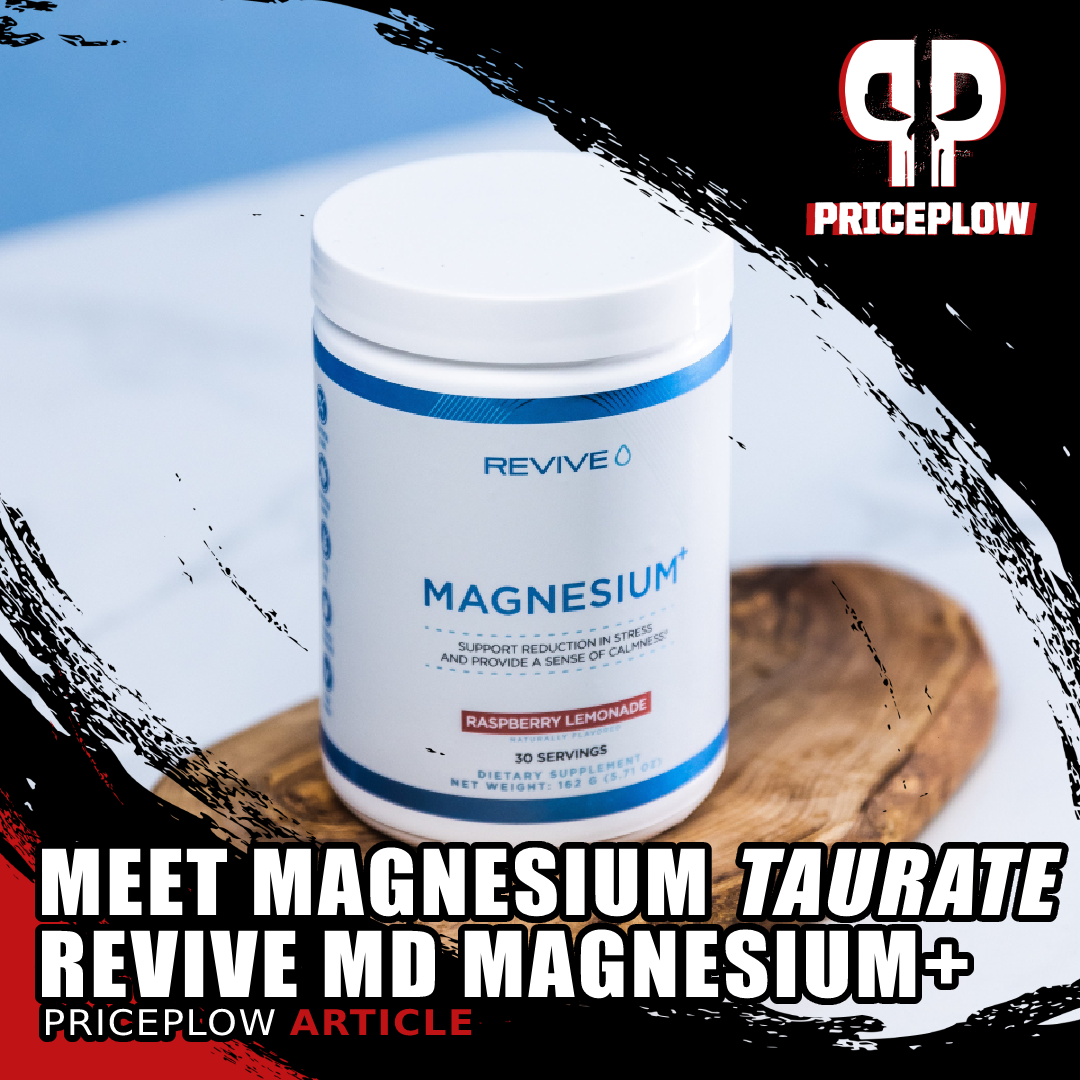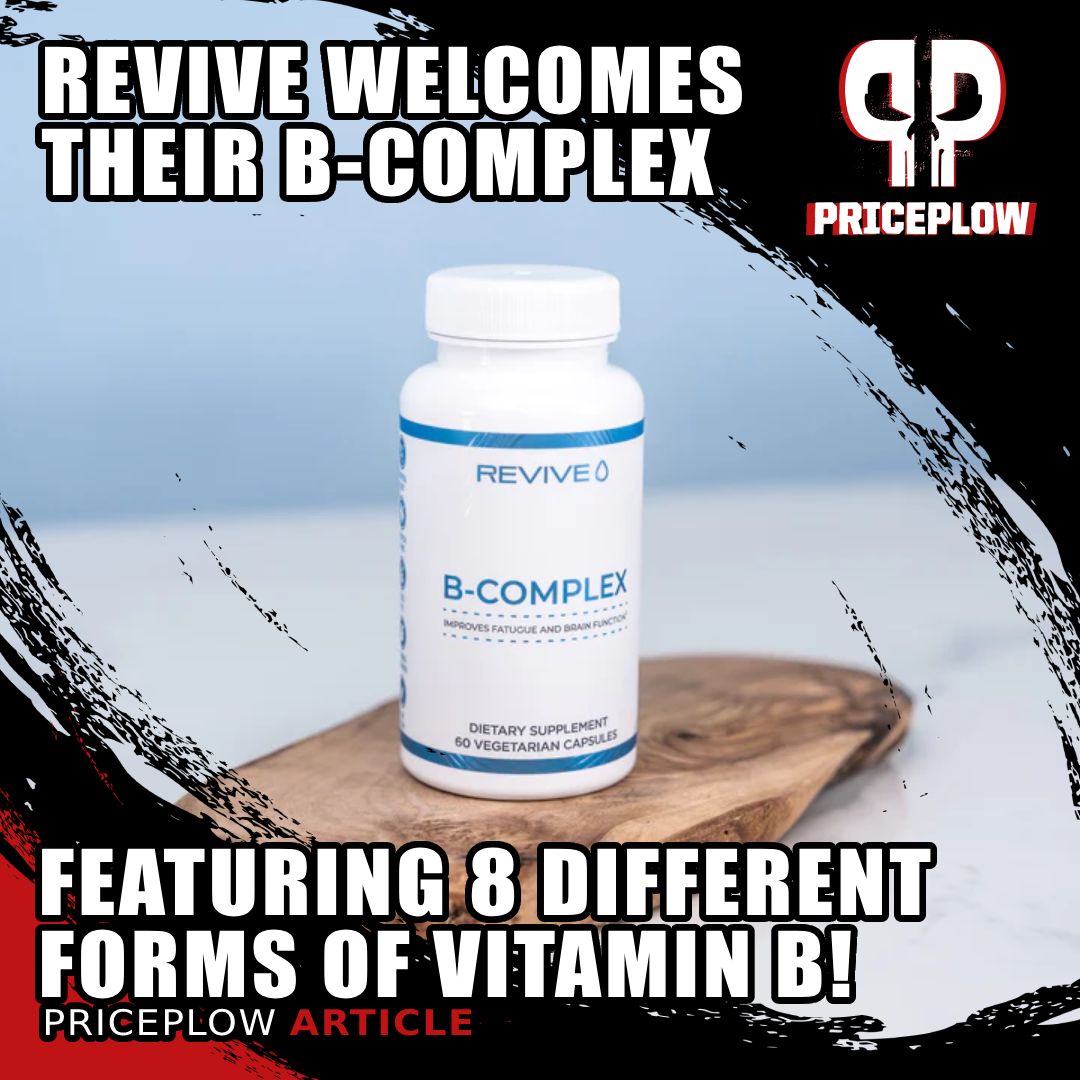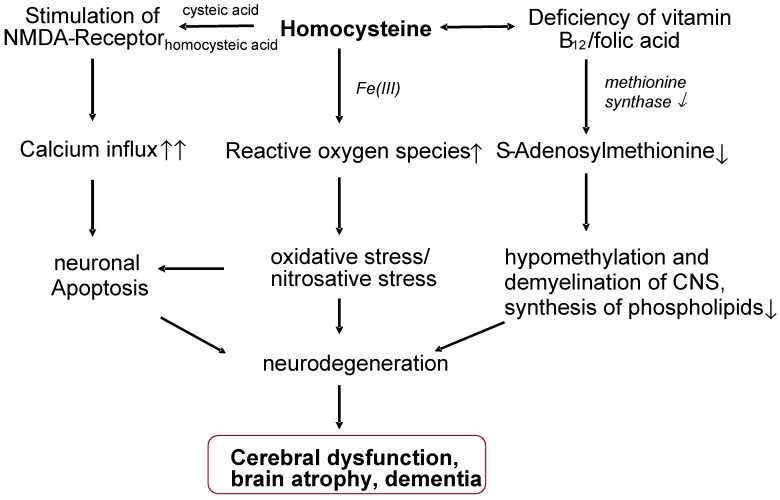Revive MD has made a name for itself with high-quality formulas designed to address specific health issues. The company has always brought exceptional scientific rigor to its production formulation, at least in part because co-founder Domenic Iacovone is a licensed medical doctor. Revive products contain only the best forms of each ingredient, with clinically-studied doses.
Given that Iacovone's business partner and co-founder Matt Jansen is an elite fitness trainer, it makes perfect sense that Revive has successfully marketed its nutraceutical approach to high-end athletes. But hindsight is 20/20 – back when Revive first hit the market with rigorous health and wellness formulas, this was an innovative business model for an industry focused mostly on candy-flavored preworkouts. Since then, the company's meteoric rise has proven that, despite the frat boy stereotypes, performance-focused athletes do, in fact, care about their health and not just their appearance.
In the intervening years, we've seen a lot of companies copy this approach. So, Iacovone and Jansen deserve a lot of credit for helping move the industry forward.
Introducing Revive B Complex
Now Revive is tackling the Vitamin B Complex, a mainstay supplement category that most readers have probably dabbled with at some point.
Generally speaking, B vitamins are crucial for cellular energy production and can improve mood, especially in people with certain genetic susceptibilities. It's why so many people with non-specific complaints like fatigue or lack of focus and motivation have anecdotally reported benefiting from B vitamin supplementation.
But there are also some more obscure, niche benefits to B vitamin supplementation that you've probably never heard of.
We'll get into those, but first, check the PricePlow news and deals:
Revive MD B-Complex – Deals and Price Drop Alerts
Get Price Alerts
No spam, no scams.
Disclosure: PricePlow relies on pricing from stores with which we have a business relationship. We work hard to keep pricing current, but you may find a better offer.
Posts are sponsored in part by the retailers and/or brands listed on this page.
This area is reserved for Team PricePlow's upcoming videos.
Subscribe to our channel and sign up for notifications so you catch it when it goes live!
Revive MD B-Complex Ingredients
In a single 1-capsule serving of B complex from Revive MD, you get the following:
-
Vitamin B1 (as Thiamine HCl) – 100 mg (8,333% DV)
Thiamine (also spelled thiamin) is one of your body's major cofactors for adenosine triphosphate (ATP) synthesis.[1] ATP is a huge deal as it's the body's primary energy currency for all cellular functions, driving essential processes like metabolism, muscle contraction, neural transmission, and cell structure maintenance.
If thiamine deficiency gets bad enough, the resulting drop in ATP synthesis can lead to massive neuronal die-off from the decline in cellular energy availability.[2] This syndrome, known as Wernicke-Korsakoff encephalopathy, often results from alcoholism as alcohol abuse causes thiamine depletion.
Thiamine is also needed for healthy glucose metabolism,[3] and type 2 diabetes is associated with below-average thiamine levels. Additionally, thiamine megadosing can improve symptoms of hyperglycemia in people with pre-diabetes.[4] These facts suggest that thiamine deficiency may play a part in the development of type 2 diabetes.
According to a 2013 meta-analysis of over 20 published studies, thiamine supplementation can support cardiac function in people with heart failure.[5]
-
Vitamin B2 (as Riboflavin-5'-Phosphate) – 20 mg (1,538% DV)
Riboflavin (vitamin B2) is naturally abundant in leafy green vegetables, poultry, fish, dairy, and eggs.[6]
Your body needs riboflavin to make flavoprotein enzymes that are needed for important physiological processes, such as electron transport, cell signaling, protein folding, and to metabolize fatty acids and foreign substances, including pharmaceutical drugs.[6]
Riboflavin's participation in the electron transport chain makes it important for adenosine triphosphate (ATP) production.[6]
-
Vitamin B3 (as Niacinamide) – 100 mg NE (625% DV)
In the bottom right, we have NAM, which is short for Nicotinamide, otherwise known as Niacinamide, what we have here in this supplement. In the future, we hope Revive can upgrade this ingredient to NMN once the FDA is defeated in their case against the B3 vitamin.
Niacin (vitamin B) is a prerequisite for nicotinamide adenine dinucleotide (NAD+) synthesis.[7-9] Upregulating NAD+ can benefit health in a powerful and fundamental way, as NAD+ is needed for a huge array of metabolic processes involved in generating cellular energy, as well as liver function and DNA repair.[10-13]
One special benefit of niacin is its ability to increase your body's expression of adiponectin,[14] a hormone with profound effects on metabolic health. For example, adiponectin improves systemic insulin sensitivity, and research shows that overweight and obese people are often deficient in adiponectin.[15] Adiponectin's primary mechanism of action is to upregulate AMP-activated protein kinase (AMPK),[16] one of your body's most important metabolic switches.
Niacin can also decrease the amount of inflammatory cytokines produced by body fat,[14] which is a huge boon for health since this kind of inflammation is closely linked to metabolic disease.[17]
Niacinamide is the flush-free form of niacin - it's also known as nicotinamide and is often spelled NAM in research studies and the chart above.
-
Vitamin B6 (as Pyridoxal-5'-Phosphate) – 50 mg (2,941% DV)
VItamin B6 is important for the activity and production of certain coenzymes that are needed for a huge number of metabolic processes and, ultimately, cellular energy production.
Pyridoxal phosphate, the active form of vitamin B6, can be converted into pyridoxamine phosphate (PMP) and other forms of B6 as needed.
Pyridoxal 5' phosphate (PLP), the active form of B6, is actually itself a coenzyme, which can be converted into pyridoxamine 5' phosphate (PMP) as your metabolism requires. These two enzymes cooperate to regulate several hundred different metabolic processes in your body.[18] Arguably the most important of these is protein metabolism, which can't occur without an adequate supply of PLP and PMP.[18]
Another important B6-dependent metabolic process is your body's regulation of homocysteine.[18] Since high homocysteine can significantly increase one's risk of cardiovascular disease, it's definitely something worth watching and keeping under control – for that, you'll need an adequate supply of B6.
Vitamin B6 is also an important neurotransmitter precursor,[18] which can definitely be a big deal for mood, motivation, and perceived energy. Your body uses B6 to make hemoglobin, which matters a lot if you care about athletic performance. Finally, B6 can affect immune function, gluconeogenesis, and glycogenolysis (the breaking down of glycogen for usable energy).[18]
Taking B6 supplements is statistically linked to decreased risk of cardiovascular disease, cancer, and neurological illness.[18]
-
Vitamin B9 (as L-5-Methyl-THF-Calcium) – 667 mcg DFE (167% DV)
Calcium L-5-methyltetrahydrofolic acid (L-5-Methyl-THF-Calcium) is a special form of 5-methyltetrahydrofolate (5-MTHF). a methylated type of folate (vitamin B9). Compared to other forms of folate, 5-MTHF exhibits superior bioavailability.[19-21]
Folate deficiency can seriously increase one's risk of the following conditions:
- High homocysteine[22,23]
- Fetal birth defects during pregnancy[24]
- Cancer[25]
Homocysteine regulation is big – low folate is one of the two most common causes of high homocysteine, a form of metabolic derangement that can wreak havoc on your cardiovascular system (vitamin B6 deficiency being the other one).[26]
In this long and complex conversion pathway, your body regulates homocysteine through the conversion of dietary folate (usually in the form of folic acid). One important part of this process is an enzyme called methylenetetrahydrofolate reductase (MTHFR) whose activity is often limited in genetically susceptible individuals.[27]
Your body actually makes 5-MTHF, one of the active forms of folate, from folic acid by way of an enzyme called methylenetetrahydrofolate reductase (MTHFR). A lot of people – about 40%, according to one study[28] – have one of several genetic polymorphisms that can slow MTHFR functioning, thus increasing the carrier's risk of functional folate deficiency and elevated serum homocysteine.
By supplementing directly with 5-MTHF, you can bypass the MTHFR enzyme, thus sidestepping this potential bottleneck.
Research shows that 5-MTHF supplementation can:
- Raise blood plasma levels[19,21]
- Decrease serum homocysteine concentrations by 14.6%[29]
- Increase the amount of folate in your red blood cells by 23%[29]
- Mitigate depressive and anxious symptoms[30,31]
-
Vitamin B12 (as Methylcobalamin) – 300 mcg (12,500% DV)
Methylcobalamin, a type of vitamin B12, is PricePlow's preferred form of B12. As a methyl donor, it can help support metabolic processes that depend on methylation.[32]
We need B12 for red blood cell formation, and B12 deficiency can lead to megaloblastic anemia,[33,34] a form of anemia in which red blood cells increase in size but decrease in number, leading to an overall decrease in aerobic capacity.
Vitamin B12 also plays some important roles similar to folate. For example, low B12 is associated with high homocysteine and, in pregnant women, significantly higher risk of fetal birth defects.[35-37]
Like folate, B12 plays an important role in keeping your blood homocysteine concentration under control. Because of this – and its importance as a precursor to S-adenosylmethionine (SAMe) – even mild B12 deficiencies can lead to irreversible brain atrophy.[38]
Even slightly low levels of B12 – on the low side of the normal range, as a matter of fact – are associated with impaired memory performance,[38] thanks in part to the effect that B12 deficiency has on blood homocysteine levels.[39] But B12 is also an important precursor to S-adenosylmethionine (SAMe), which is crucial for methylation, myelination, and phospholipid production in the central nervous system.[39]
Although it isn't clear that B12 supplementation can increase energy levels in people who aren't B12 deficient, fatigue is an early sign of B12 deficiency,[40] and something we obviously would like to avoid.
-
Vitamin B7 (as Biotin) – 400 mcg (1,333% DV)
Biotin (vitamin B7) is probably a familiar ingredient if you've ever taken a hair, skin, and nails supplement. Biotin deficiency can wreak havoc on all three of these, causing issues like dermatitis[41] and hair loss.[42,43]
Revive MD NAC is out -- the much-discussed glutathione precursor has a wide-ranging array of benefits, from supporting liver function to psychological support.
Biotin regulates insulin production,[44] so supplementing with biotin might be a useful strategy for preventing type 2 diabetes. In fact, one study in rats found that biotin can actually improve symptoms of T2D,[45] but the research on this subject is far from conclusive.
Finally, as is the case with B12 and folate, biotin deficiency can increase the risk of birth defects.[46]
-
Vitamin B5 (as D-Calcium Pantothenic Acid) – 110 mg (2,200% DV)
Pantothenic acid (vitamin B5) is another nutrient that's crucial for skin health. It helps ensure proper epidermal barrier function, and can even soften your skin.[47] One double-blind, randomized, placebo-controlled study found that pantothenic acid can alleviate symptoms of adult acne.[47]
Vitamin B5 deficiency can interfere with the production of collagen and new skin cells.[48]
Supplementing B5 seems to have a cardioprotective effect, too. It helps preserve arterial function by lowering LDL cholesterol.[49,50] The doses used in these studies are several times larger than the 110 milligram serving in Revive B Complex, but our editorial opinion here at PricePlow is that it probably doesn't matter because 110 milligrams is still way more than we need to avoid B5 deficiency.
Vitamin B5 is also important for acetylcholine synthesis and myelin production.[51] We often refer to acetylcholine as the learning neurotransmitter because it's unbelievably important for memory consolidation, your brain's process of converting short-term memories into long-term memories. In light of B5's neurological role, it's not surprising that B5 deficiency can, much like B12 deficiency, lead to neurodegenerative damage.[52]
Finally, while we've discussed a lot of benefits in this article in relation to vitamin supplements, probably the most surprising is that B5 seems to have an anti-parasitic effect. Studies have shown that B5 may have the ability to inhibit the growth of Plasmodium falciparum, the protozoa parasite responsible for causing malaria.[53] As interesting as this is, please note that we are not proposing vitamin B5 as a possible malaria treatment. We need to see a lot more research before establishing that connection.
Conclusion

Be sure to check out Revive's other vitamin and mineral products, like their Magnesium+ which features 2 forms of magnesium to aid in relaxation, cardiovascular health, and indigestion relief.
We don't often get to do a deep dive on B vitamins. There are some broad commonalities between the various compounds that fall into this class of vitamins – all important for cellular energy production, for example. But as you can see, there are more obscure, idiosyncratic benefits associated with some of them. We love seeing the methylated forms of B12 and B9 used, because methylation is hugely important for overall health. And given how many of us are affected by the MTHFR polymorphisms, consuming more methyl donors is probably not a bad idea.
Revive has a wide variety of vitamin and mineral supplements that can help support everybody's health. Be sure to check out the PricePlow blog to learn more about the science-backed formulas Dom and his team have to offer.
Revive MD B-Complex – Deals and Price Drop Alerts
Get Price Alerts
No spam, no scams.
Disclosure: PricePlow relies on pricing from stores with which we have a business relationship. We work hard to keep pricing current, but you may find a better offer.
Posts are sponsored in part by the retailers and/or brands listed on this page.









Comments and Discussion (Powered by the PricePlow Forum)